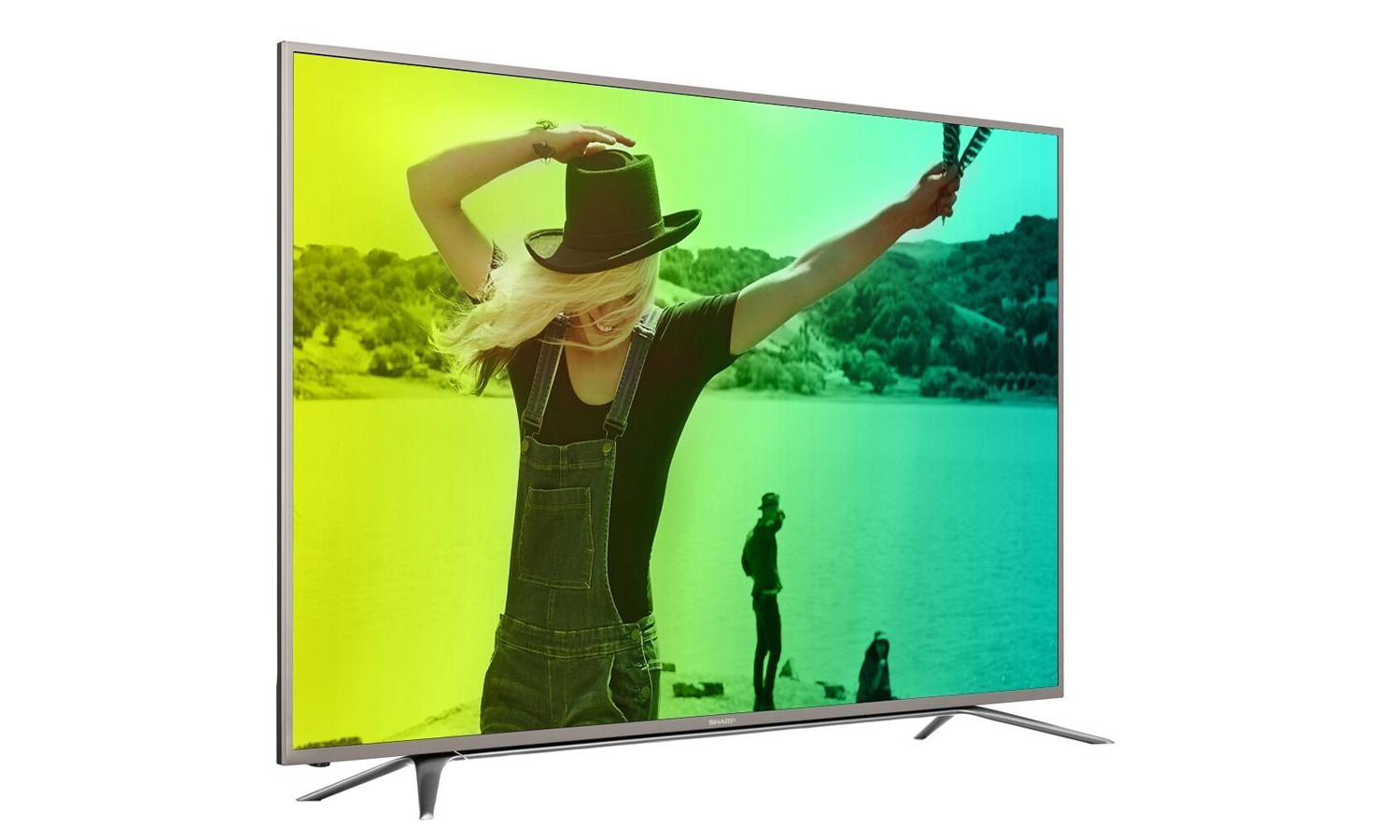Tom's Guide Verdict
With mediocre performance, the 55-inch Sharp Aquos LC-55N7000U faces tough competition from bargain 4K sets that lack HDR support but produce a comparable picture for less money.
Pros
- +
Detailed 4K picture
- +
HDR support
Cons
- -
Weak contrast
- -
Limited app support
- -
Poor upscaling
Why you can trust Tom's Guide
The Sharp Aquos LC-55N7000U is an average performer in a 4K marketplace dominated by cheaper basic models and full-featured luxury sets. Although the $599 Sharp Aquos set includes high dynamic range (HDR) support for better color and brightness, it has trouble distinguishing itself among some pretty tough competition. We suggest that you check out best 4K TVs list for a better option.
Design: Retro touches
The Sharp brand in the U.S. is owned by Hisense, so unsurprisingly, there are some similarities between the Sharp Aquos LC-55N7000U and models such as the Hisense 50H8C. Sharp's set uses the same remote control and smart-TV software interface as the Hisense model, for example, but offers some higher-end features, including HDR content (although not the Dolby Vision version of the standard). On the other hand, this LCD set uses a basic edge-lit LED design that does not have the benefit of local dimming, a feature that can improve contrast in particular scenes.
While the Sharp Aquos LC-55N7000U has the same basic design outline as the Hisense 50H8C, with brushed-steel feet on each end of the panel to provide support on a tabletop, the Sharp set has a flashier, stainless-steel bezel around the screen that gives this set a retro feel.
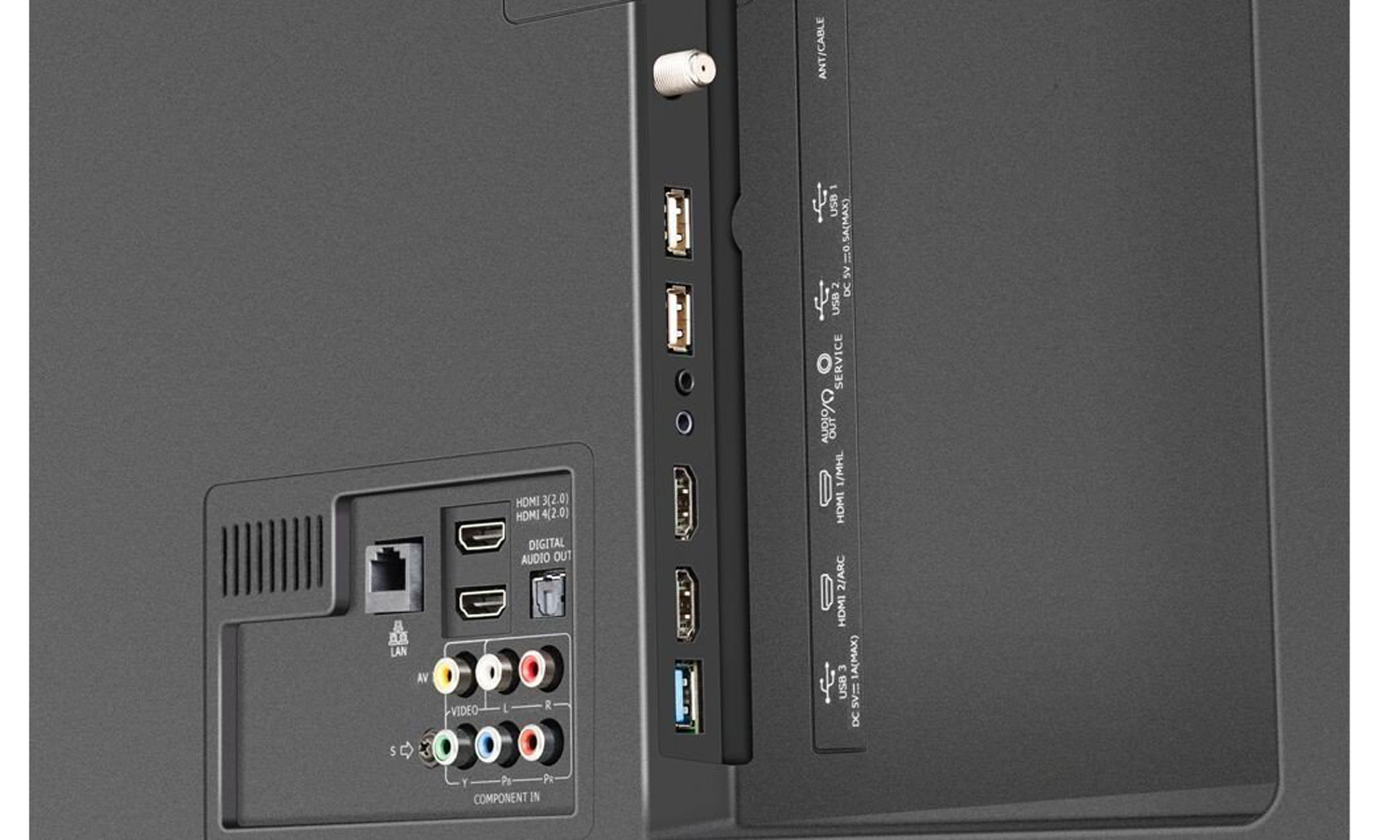
Beneath the shiny surface, however, Sharp's TV has the same basic connections as the Hisense set, including built-in Wi-Fi, USB connections for external sources and four HDMI ports (although only two HDMI plugs support the 2.0 specification for copy-protected 4K sources).
MORE: Our Favorite 4K (Ultra HD) TVs Available Now
Performance: Detailed but dim
The Sharp Aquos LC-55N7000U can render details in shadows and in other challenging scenes, besting previous-generation, conventional HD and 4K sets, and it did fairly well in some of our tests.
The set often overdrives the brightness levels, even in its best preset Theater mode.
Its color accuracy stands up well against models such as the less expensive 55-inch TCL Roku TV (3.57 versus 10.49 for the TCL in Delta-E scores, where lower numbers are better). And in Theater mode, the Sharp was able to reproduce 92.6 percent of the sRGB color gamut.
However, the Insignia Roku TV beat the Sharp set in both respects: 95.07 sRGB/1.12 Delta-E. Neither the Insignia nor the TCL sets support HDR, though.
When watching the 4K HDR version of The Martian on the Sharp Aquos LC-55N7000U, I noticed a loss of some details, such as stars above the Earth. Some of that may be due to this set's slightly off-kilter color results, as noted in our tests; the set had an overall tendency to show a greenish cast, where other sets may overemphasize reds and pinks.
On the other hand, native 4K HDR videos returned some of the black levels that were lacking in upscaled content. Even non-HDR 4K movies, such as The Amazing Spider-Man 2, looked impressively respectable on the 55-inch Sharp Aquos TV.
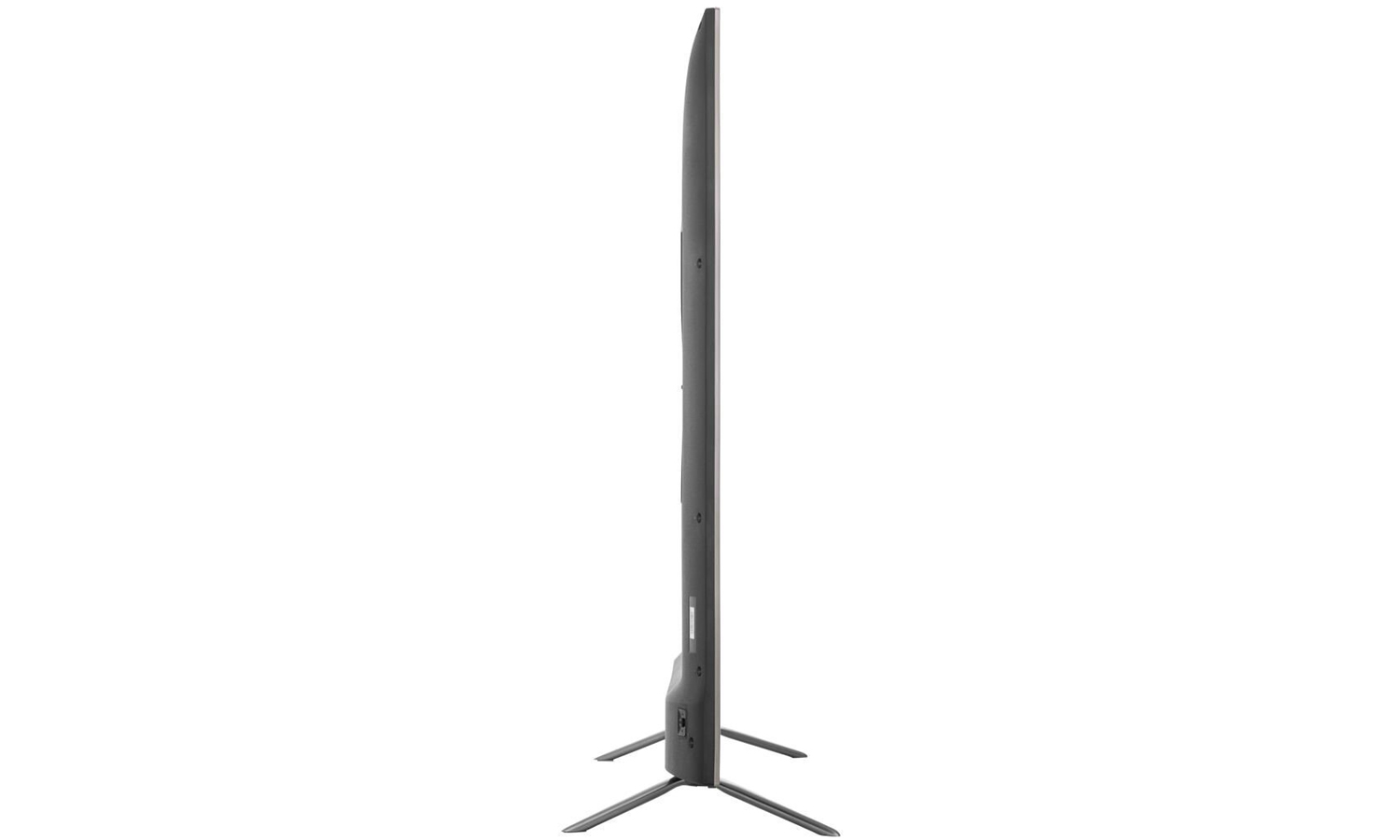
In terms of overall picture detail, the Sharp Aquos could not match the precision of the leading Samsung and LG sets, making dusty scenes in Mad Max: Fury Road look dustier than usual. To be fair, those sets cost more than twice as much as the Sharp TV.
Unfortunately, the majority of material available for viewing is still standard HD, and Sharp's upscaling leaves something to be desired. The set often overdrives the brightness levels, even in its best preset Theater mode. Blacks look gray and screen uniformity can suffer, with light appearing to leak in from the corners. Upscaling Skyfall produced some picture artifacts as well, such as the villain's head momentarily disappearing in the motorcycle chase scene.
Audio: Practical power
The built-in speakers of the Sharp Aquos LC-55N7000U are efficient, which means they can kick out plenty of volume, certainly enough to fill the typical suburban home's living room or den. Like many other sets, however, the sound tends to ignore lower-register notes.
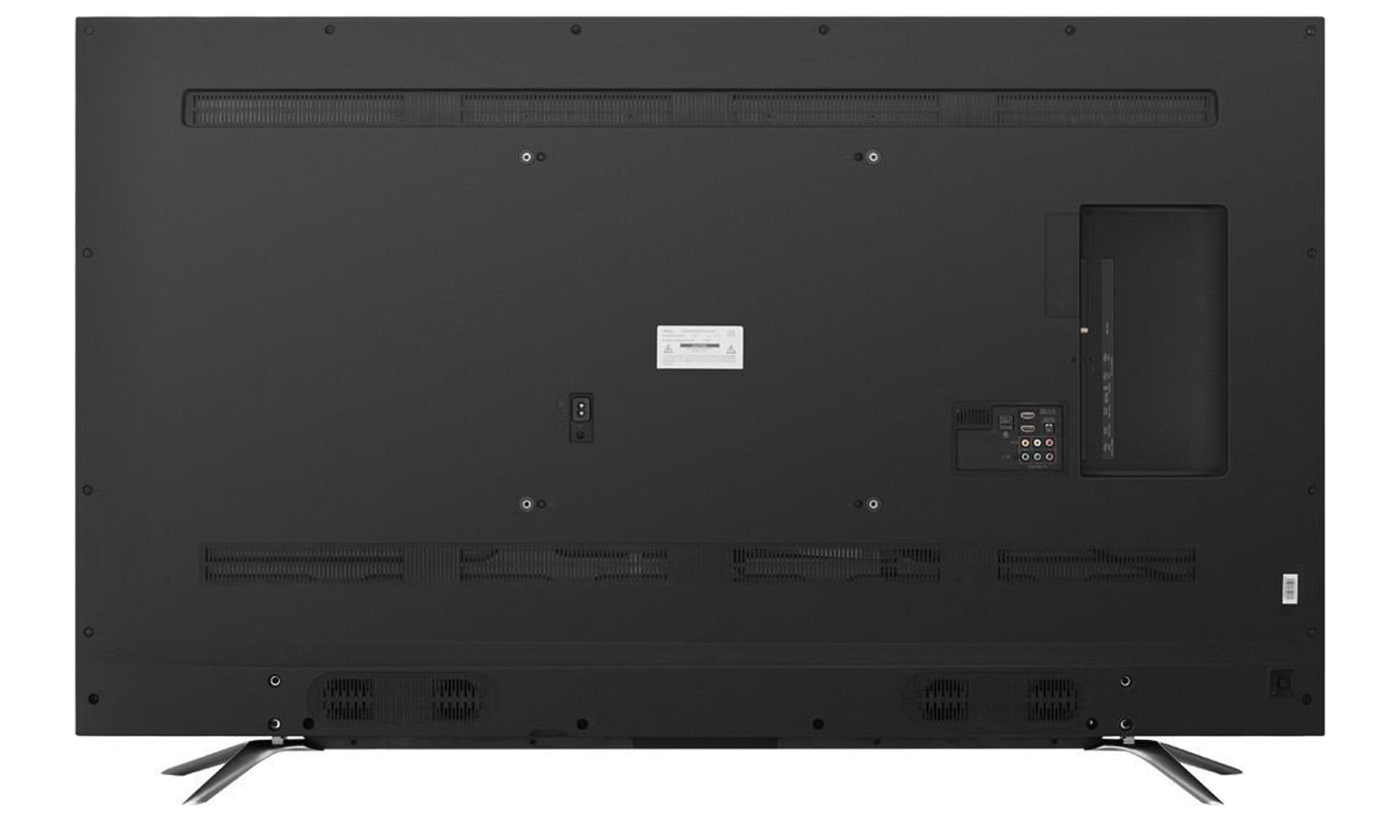
Adele's voice sounded thin and reedy, for example, and with the sound settings in Theater mode, the high end was persistent and dominating. It means that female vocals get artificially pushed forward, and while you might be able to hear sonic details like the singer's breaths between lines, it comes at the expense of the midrange notes.
The Music mode audio setting flattened out the sound, with less emphasis on the high end, but there still wasn't much bass. The sound-track elements, like water rushing over a waterfall, had a tendency to sound tinny.
MORE: Our Favorite Soundbars for Small and Big TVs
Interface: Basic blocks
Using the same Linux-based smart-TV interface as the Hisense 50H8C, the Sharp Aquos software, while not terribly glamorous, uses big icons that fill the screen when you hit the home button. Supported streaming services include Netflix, Amazon, Vudu and UltraFlix for 4K fare.
Scrolling across the bottom of the interface, you'll find separate tiled sections for connected media, inputs and apps (such as Pandora, Facebook and the Opera web browser). You can look for additional apps through the Opera TV Store, but it's far from an elegant solution, and it doesn't offer many options. There's no support for Spotify, iHeartRadio or Slacker, for example.
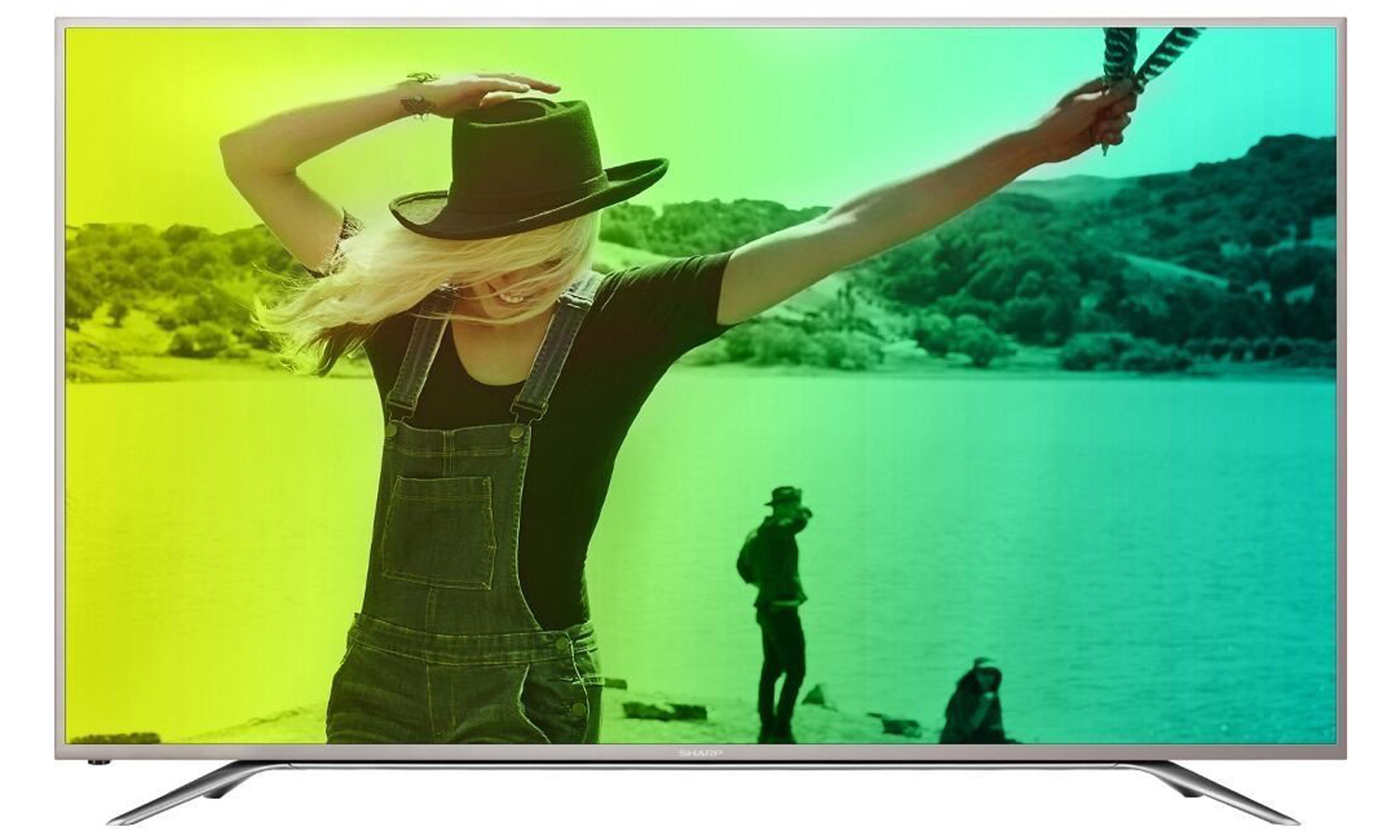
The included wand-style remote control is spartan and straightforward (it's the same design as that of the Hisense 50H8C). Up top is a numeric keypad, followed by a four-way directional pad, up/down buttons and then dedicated buttons for launching Netflix, Amazon, Vudu and YouTube. It's convenient if unadorned, but lacks more advanced features like voice search or an earphone jack for late-night listening.
Bottom Line
Boasting a venerable name in the TV business, the Sharp Aquos LC-55N7000U fails to live up to its heritage. Yes, it supports HDR programming (although not Dolby Vision), and, yes, it's a step up from conventional HD TVs. However, the mainstream TV market is moving to 4K en masse, and there are other non-HDR options available that cost less (such as sets from Sharp's owner Hisense) that are a better bet for those on a budget.
John R. Quain has been reviewing and testing video and audio equipment for more than 20 years. For Tom's Guide, he has reviewed televisions, HDTV antennas, electric bikes, electric cars, as well as other outdoor equipment. He is currently a contributor to The New York Times and the CBS News television program.
